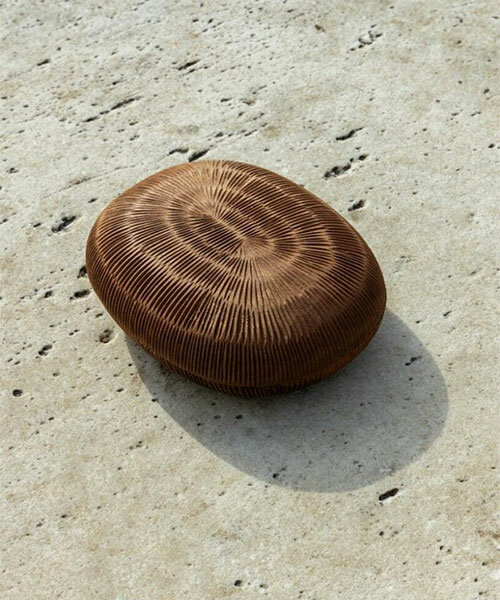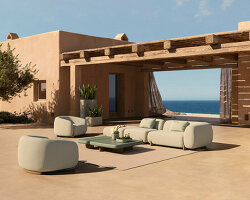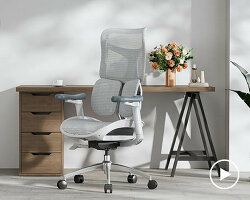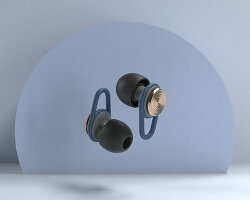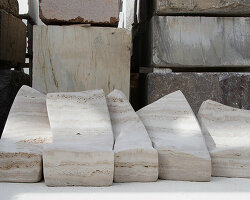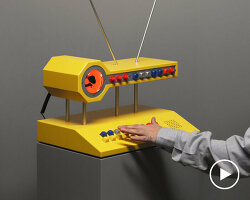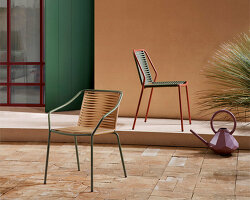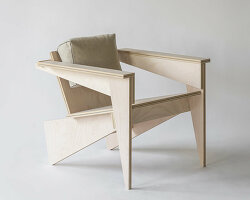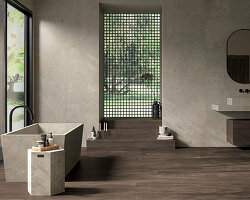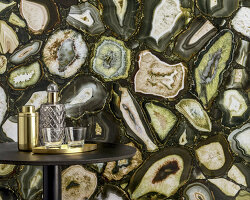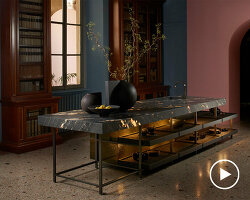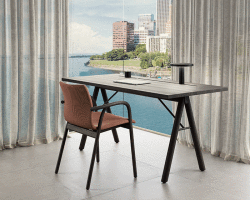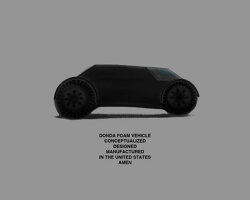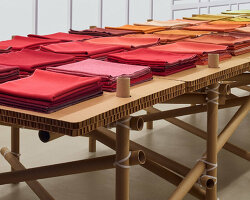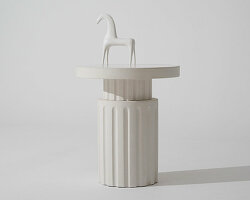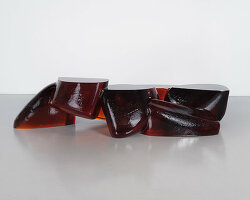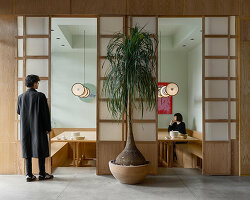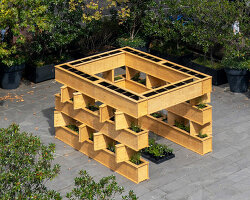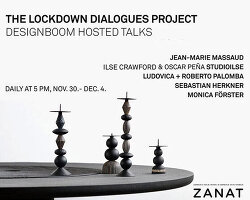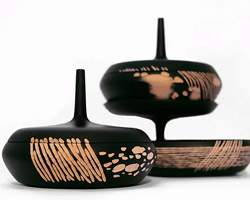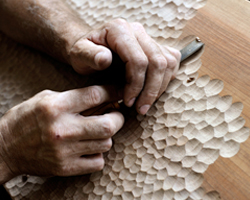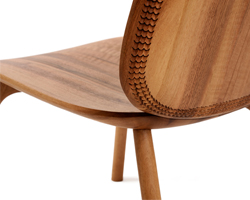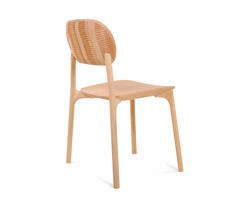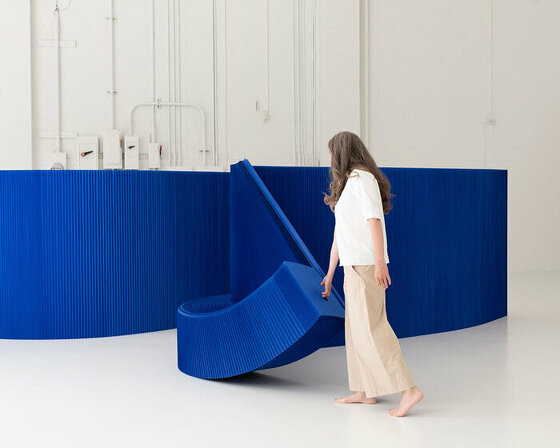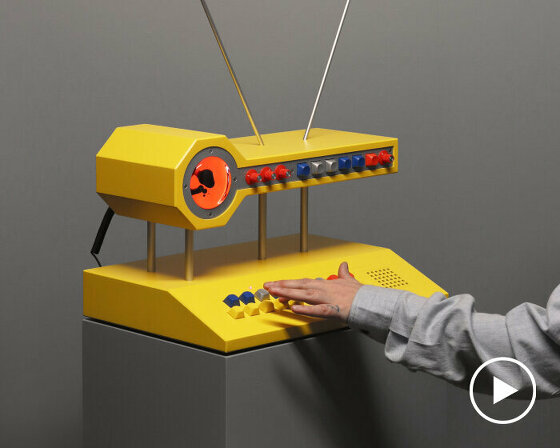naoto fukasawa honors japanese woodcarving heritage
Bosnian brand Zanat returns to Milan Design Week with a collection of twelve sculptural furniture products designed in collaboration with several leading international designers. United by a profound mutual appreciation for the handmade and traditional wooden craftsmanship, the team tapped esteemed Japanese designer Naoto Fukasawa to carve the sculptural yet functional Genkan series, comprising a console table, mirror, storage box, and chair. Alongside the bespoke Buna chair, the works were unveiled at Salone del Mobile, their unconventional and subtly playful approach to textures and forms reviving woodcarving heritage in new expressions.
Notably, the Genkan console and the Buna chair harmoniously intertwine the visual philosophies of both the designer and the brand, juxtaposing strength with fluidity, avant-garde artfulness with primeval reliability, and traditional minimalism with unexpected tactility. ‘We are not really designing objects to be ‘good design’ by eye, but we are exploring the experience of touching the furniture. So, therefore, our communication too is attached by hand. That is a very important factor in designing with Zanat for me,’ Naoto Fukasawa tells designboom. Read on for the full interview below.
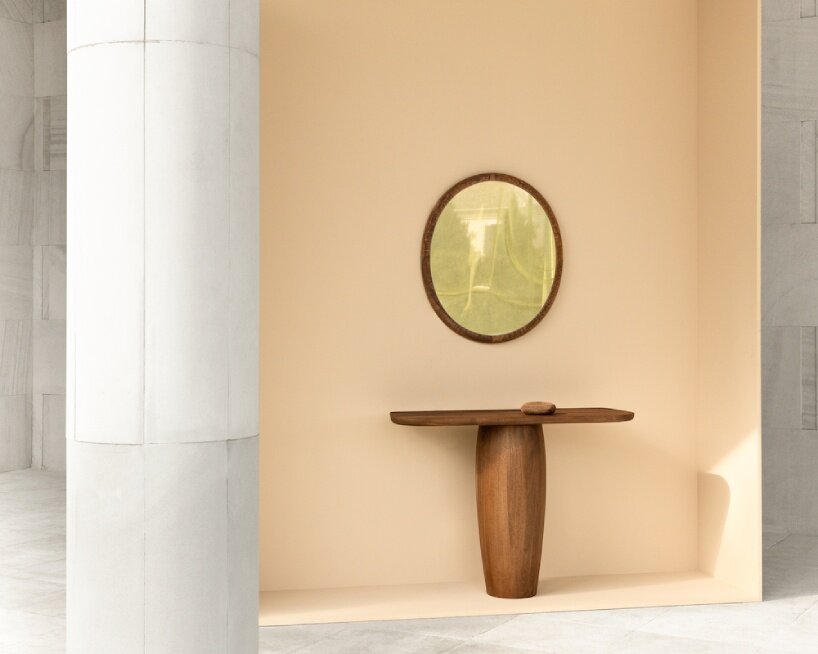
all images courtesy of Zanat
unconventional engravings infuse new dimensions and warmth
Genkan, named after the Japanese word for entryway, symbolizes and enriches the daily ritual of departing from home and returning from the outside world. The tabletop designed by Naoto Fukasawa (find more here) exudes a sense of warmth, evocative of a welcoming host. At the same time, the accompanying storage box for Zanat (find more here) is reminiscent of a seashell that conceals its belongings within and invites tactile interaction as soon as one enters the space. Their carvings extend through to the mirror, framed by an intricately engraved wooden rim that bears the influence of Naoto Fukasawa’s hand.
The Buna chair, meanwhile, derives its name from the Balkan river, defined by undulating components that meander and unite. Its seat, hand-carved from wood sourced from forests or private fruit orchards like the rest of Zanat’s catalog, echoes the way in which ancient chair seats were sculpted from tree logs with primitive knives.
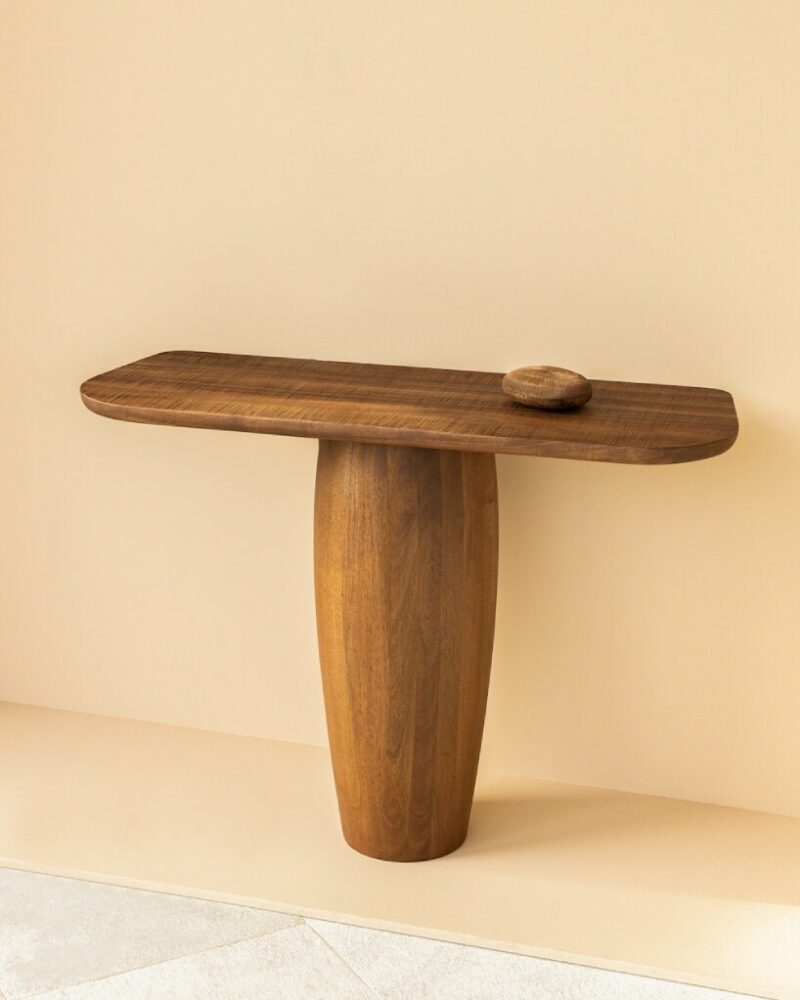
the Genkan console and storage box
Naoto Fukasawa on genkan, buna, and zanat
designboom (DB): Can you tell us about your relationship with Zanat and how this collaboration came about?
Naoto Fukasawa (NF): Orhan Nikšić, the CEO and co-founder of Zanat, is always looking for collaborators who are aligned with their philosophy. It is a small, authentic brand that works with woodcarving, focused on handmaking their projects and teaching the next generation of craftsmen. We developed a very good relationship and continued to work together to make very unique objects by hand.
DB: Can you talk about the Genkan collection — what inspired it?
NF: When we had met Orhan, I saw their Zanat exhibition in Milan with the products and a stage showing the craftsmen at work, like a play. I immediately thought of the idea of something like a wooden sculpture, and where would it be most fitting – as sculpture, wood, furniture, or object?
Then I thought of Genkan, which means hallway, or entrance area, in Japanese. We normally have a very small table and a mirror which you can put your keys or newspapers and letters on here. It is an area where we have this ritual to either go out or reenter. Similarly, I wanted to create something that is not really a common object itself but is very symbolic and can be used in any space and not just the home.
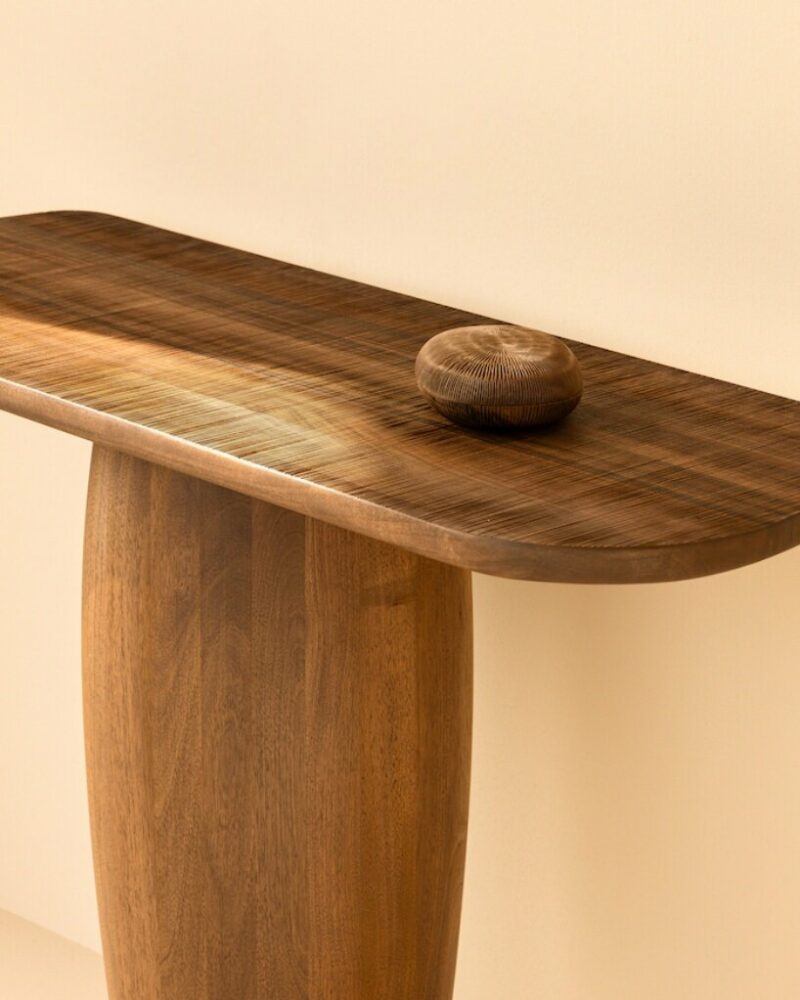
the storage box is reminiscent of a seashell that conceals its belongings within
DB: Can you tell us about the design elements, especially the carvings and the tactile experience?
NF: I was quite impressed when I had this new experience of making the carvings and with the rough surface of the tabletop. Normally, people think that tabletops are totally flat but here they are making these carving details on top. It is quite unique and unusual, but when you put something on it, or touch the surface, it has a really nice feeling.
So then I thought, we are not trying to make a plain or flat surface. We are not really designing objects to be ‘good design’ by eye, but we are exploring the experience of touching the furniture. So, therefore, our communication too is attached by hand. That is a very important factor in designing with Zanat for me.
DB: Have cultural influences, both Japanese and Bosnian shaped your designs and processes in this collaboration?
NF: In my mind, they are not really mixed with each other. Japan is maybe the one of the best and most famous countries to use woodcraft technology. And I think Zanat is also focused on this same kind of quality but with different solutions. So it is very strongly connected in that way. When I design something new for Zanat, I don’t directly bring Japanese culture into it, but because I am Japanese, some parts of this maybe exist in the project.
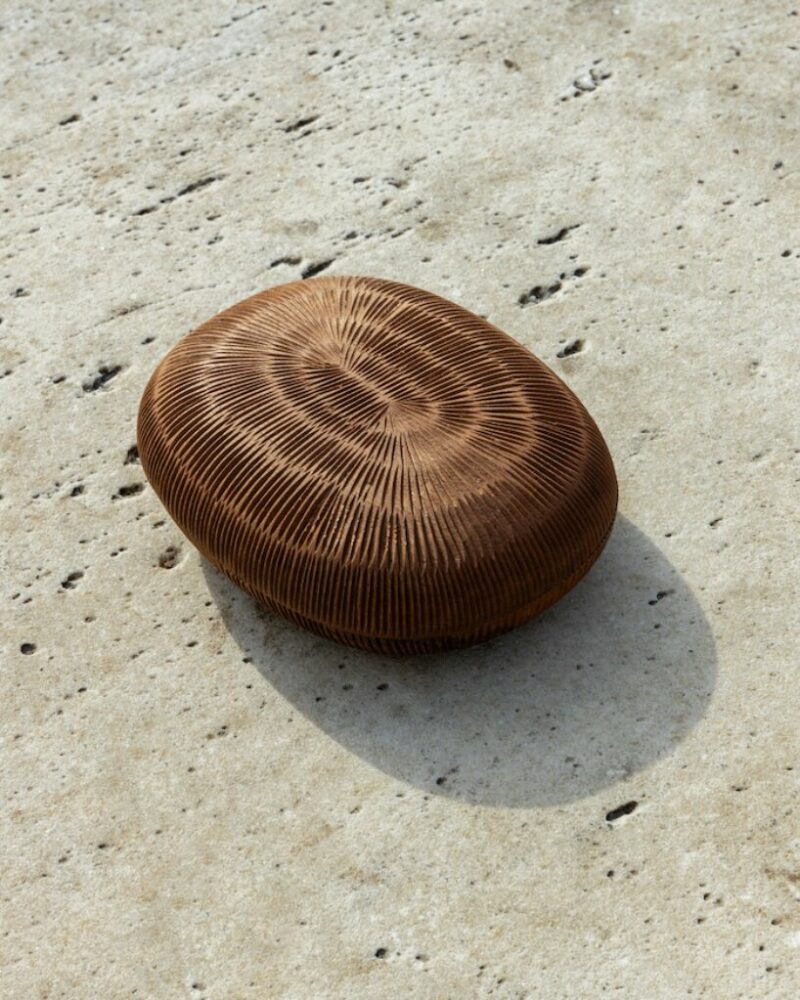
‘I immediately thought of the idea of something like a wooden sculpture,’ says Naoto Fukasawa
DB: Can you tell us about the Buna chair and the influence behind it?
NF: When we were checking the Genkan models, we had a meeting where I felt that that the Zanat team might want me to design a chair because they knew me as one of the greatest wooden chair designers in Japan. And so when I naturally asked the question – would you like me to do something like the chair design for you? – they very happily said yes. We were very quick start with this and complete it as we wanted to do something for Salone del Mobile in Milan. I already had an idea in my mind because I had already visited the Zanat factory two times.
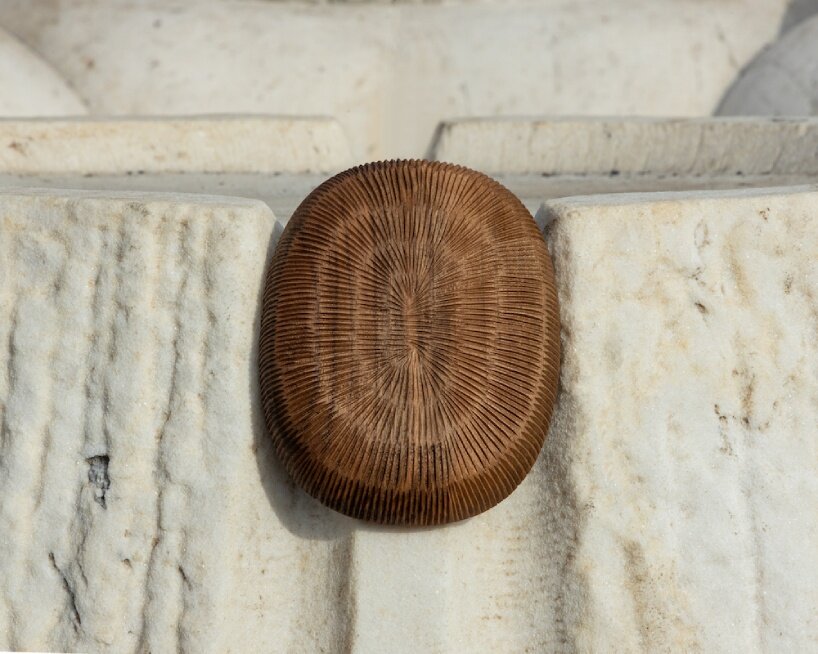
‘our communication too is attached by hand,’ shares the Japanese designer
DB: Zanat describes the collection as ‘rebellious’. How do you make a chair rebellious and still ensure it is functional and reliable? How would you describe the chair yourself?
NF: A chair is a really interesting object because it is very functional and used for comfort. But it also has another purpose: to be a sculpture or object, just left there without anyone using it. A chair is so important because, unlike other furniture, it is kind of at one with its user. So I designed it with both approaches. Therefore, the shape of the chair seems really complicated, its surface too, but the wood is very solid and it is easy to use.
DB: How would you describe the whole collaboration with Zanat?
NF: We immediately became friends who share the same soul, with a commitment to handmade design. It is totally separate from the modern industry and manufacturing. We are trying to make something for the human being, and this is the key part of the partnership. Together to be focused on the same goal.
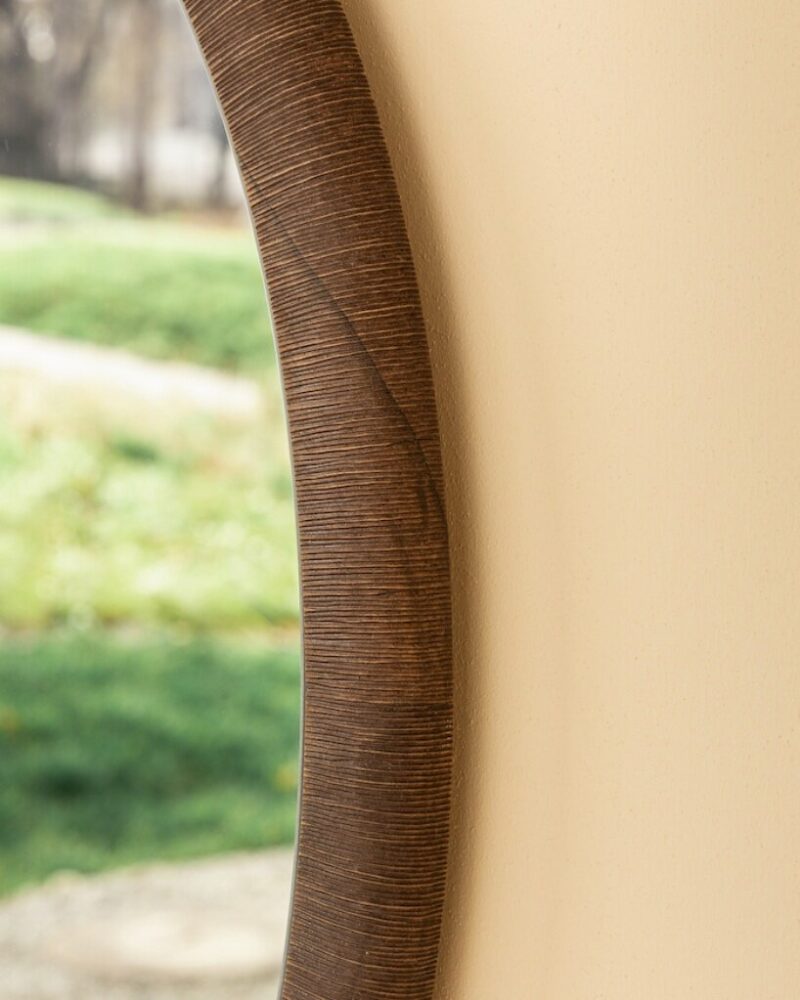
details of the Genkan collection mirror
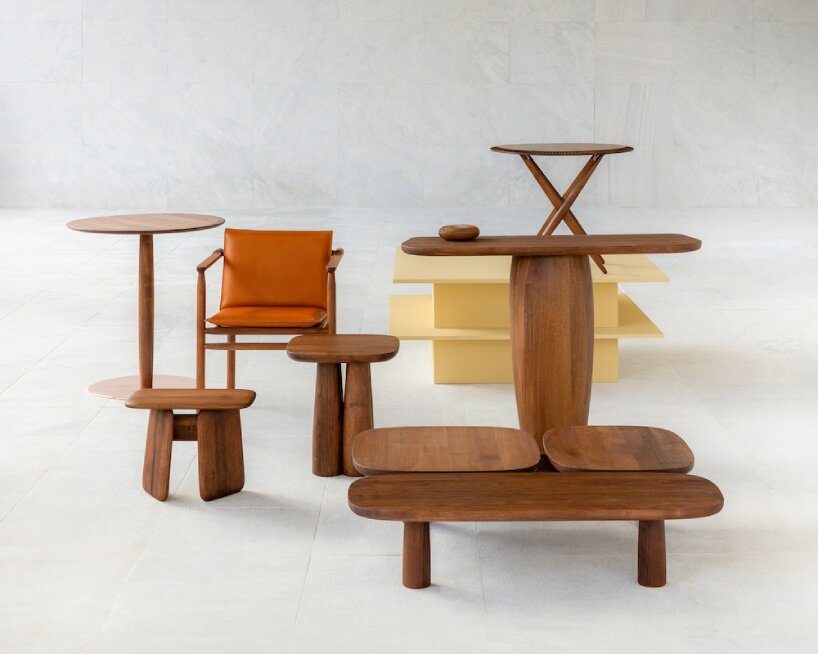
the works were unveiled at Salone del Mobile
project info:
designer: Naoto Fukasawa, Zanat
program: Milan Design Week
dates: April 16-24
location: Hall 24, L02 – L04, Salone del Mobile, Milan
chair design (634)
design interviews (58)
milan design week 2024 (73)
naoto fukasawa (68)
table design (132)
wood and timber architecture and design (981)
zanat (6)
PRODUCT LIBRARY
a diverse digital database that acts as a valuable guide in gaining insight and information about a product directly from the manufacturer, and serves as a rich reference point in developing a project or scheme.
